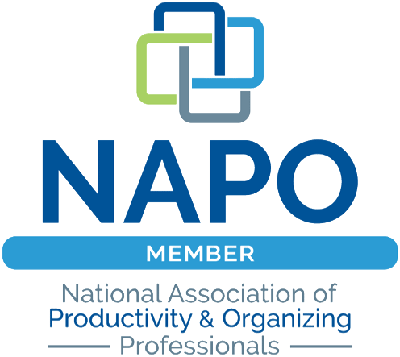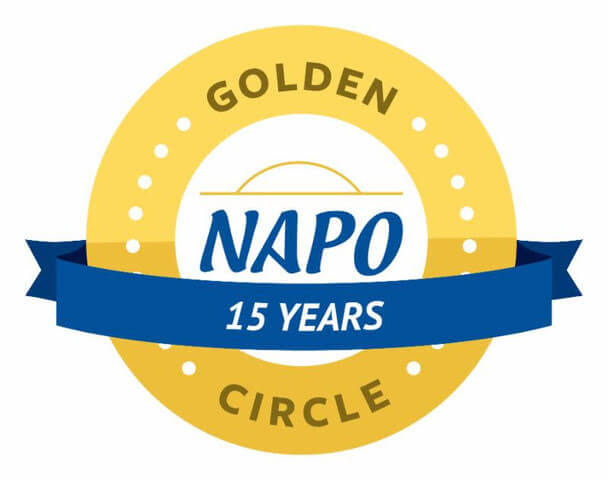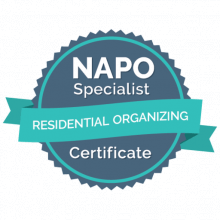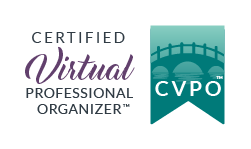Archive for the ‘
Clutter ’ Category
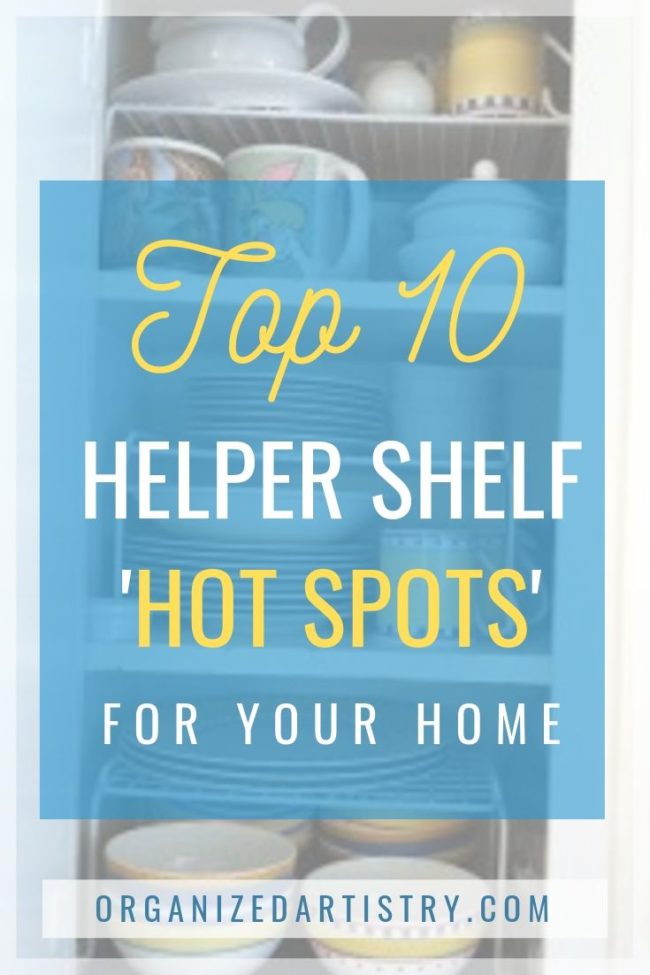
A while back, I wrote an article for my website about my favorite organizing products. Years have passed but my favorites have not changed. One of those favorite organizing products is the Helper Shelf.
What is a ‘helper shelf?’
A helper shelf divides the horizontal space of a shelf, offering more storage space above and below itself. They come in many different widths and heights—some are even width-adjustable. Looking for one to match your decor? You’ll find most are made of chrome, plastic, metal or wood. Helper shelves can be found in the same aisle as other kitchen organizing products and purchased at home stores like Target or in specialty stores such as The Container Store. They can be used anywhere you need to double a shelf space.
I recently counted how many helper shelves I was using in my home–about 15! And I have a few in my basement that are waiting to be used when the need arises.
I am such a fan of helper shelves, I was quoted in this article about them!
Do you have places in your home that could use a helper shelf? If so, get ready to get organized. Here are my top ten helper shelf ‘hot-spots’ for your home:
1. Linen closet – Besides sheets and towels, linen closets often house medicine, health and beauty supplies, lightbulbs and other small items. This is a picture of the shelf in my linen closet where I keep health items for my two kids. Notice–lots of little packages. A perfect spot for a helper shelf!
2. Medicine cabinet – If there’s a spot in our homes with small bottles and boxes, it’s a medicine cabinet. Most standard-sized helper shelves don’t fit in a medicine cabinet but while shopping at the Christmas Tree Shop a few months ago, I came across one that was made especially to fit in medicine cabinets. I bought it for a whopping $1.99. Turns out I didn’t need a helper shelf in my medicine cabinet so I now use it on my…
3. Kitchen counter – I have a small kitchen and need certain items handy. Thought the ‘medicine cabinet’ helper shelf would work well to organize items near my stovetop. This is a picture of the small helper shelf in action–shorter items below and taller items on top. It’s been working very well for me!
4. Kitchen cabinet – This is where many people use helper shelves. My kitchen does not have much cabinet space so I had to maximize the space as best I could.
Between these two cabinets, I have five helper shelves. They came in extra handy when I had kids and had to make room for their kiddie plates, bowls and cups.
5. Freezer – I have one of those older refrigerators with the freezer on top. I use a helper shelf to double the space that might otherwise be a pileup of bagels, frozen veggies and leftovers. Small items such as the ice cube trays fit well under the shelf while flat items stack well on top.
6. Pantry – Sometimes we can adjust our pantry shelves and sometimes we can’t. If you have tall pantry shelves that can’t be adjusted, a helper shelf will create more space. Double the space means double the room for food storage! Here, small food items such as jello and pudding boxes fit well underneath and larger boxes stack equally as well on top.
7. Playroom – Kids have big toys and small toys and as a parent, I know that not all shelves accommodate all sizes of toys. Place a helper shelf on a tall shelf to store puzzles or board games on top and create a home for small toys like cars or a basket of Beanie Babies underneath.
8. Home Office – Use a helper shelf in a closet or storage piece to neatly stack and store office supplies. This will make it much easier to find and retrieve the supplies you need.
9. Laundry room – Like the playroom, a laundry room also has large items and small items that both need an organized home. Purchase a heavy-duty helper shelf for detergent storage and place small items such as dryer sheets and a receptacle for lonely socks below.
10. Over/Under Kitchen Sink – I had one of these when I lived in an apartment years ago. It was a great way to make more room for me in my already tiny kitchen. I put my sponge underneath the shelf and kept dishwashing soap and a few decorative items on top.
What are YOUR helper shelf ‘hot spots?’

In 2007, Jack Canfield of ‘Chicken Soup for the Soul’ fame was the Keynote Speaker at the 2007 National Association of Professional Organizers Conference in Minneapolis. Since then, I have subscribed to his newsletter–this article came through my inbox back in April and I thought it would be perfect to post on my blog. Thanks for your words of wisdom, Mr. Canfield!
Clearing Clutter Increases Success
Our physical spaces are filled with dozens of minor distractions and irritants, such as stacks of unread books, scuff marks on the wall, and closets filled with unused items. For most people, these things are like gnats – annoying, but generally insignificant and easily ignored.
Rarely do we recognize them for what they really are – potent threats to our productivity, energy, concentration and peace of mind.
For those of us committed to achieving greater success in our lives, a cluttered physical environment produces three negative consequences:
1. You feel drained. If there are things to do everywhere you look, your mind constantly keeps thinking “I need to fix that.” Eventually, you to feel drained, anxious, irritable, and overwhelmed. To cope, we have to put blinders on and overlook the distractions.
2. Problems spiral out of control. We often overlook irritations for the short-term gain of being able to continue with our daily routine. The danger, however, is that some problems with grow worse with lack of attention. The chip in the windshield that could have been fixed in 30 minutes grows to a crack that requires replacement of the entire windshield.
3. You miss important clues and ideas. It’s impossible to selectively numb out your awareness, ignoring only the minor distractions in your physical space while paying close attention to everything else. This is perhaps the biggest danger for success-minded people. Our most powerful insights often manifest in gut feelings, fleeting thoughts and subtle cues. Numbing out to our cluttered physical environments makes us oblivious to these clues, as well.
Physical Space Impacts Mental Space
Seemingly small irritations and distractions also have a dramatic impact on our mental state. It’s common for people who feel overwhelmed by their physical clutter to go into a state of resignation. When you have a sense that you can’t control the little things – such as quickly finding a stapler when you need it – then it becomes easy to tell yourself that there’s no way you can have the other, bigger things that you want, such as a better car, bigger house, prestigious job, or loving relationship.
The good news is that the same concept works in reverse. When you do recognize that you can control little things, such as the squeak every time you open your front door, you recognize that you can control the bigger things in life, too. Taking action to manage irritations, distractions and clutter builds your confidence in your ability to achieve success, regardless of form.
3 Ways to Deal with Clutter
There are three ways to change any environment: add something to it, take something out of it, or modify it in some form.
Go through your environment and figure out what is irritating and distracting you. Ask yourself how it needs to be fixed. Then think about who you might be able to delegate all or part of the task to. One reason that to-do items accumulate is that we feel like we have to do all of the work ourselves. One of the key strategies for getting more done is to master the art of delegation.
To help you move forward with this process, I’ve posted an “Irritations & Tolerations” worksheet on my blog. Use this tool to identify and create an action plan for handling your irritations and tolerations.
Next, scan your environment to identify elements that need to be removed completely, as well as items that can be brought in to increase the energy in your space. For example, you might find that removing the television or computer from your bedroom makes your sleeping space more relaxing and peaceful. On the other hand, you might find that adding a conference table to your office gives you an inviting place for creative work, while adding plants makes you feel calmer and connected to nature.
Spotting “Good” Clutter
Remember that all clutter is not bad. For many people, clutter is part of their creative process.
When in the midst of creation – such as writing an article, developing a presentation, mapping out a business strategy or creating a product – they pull out resources like books, clippings, articles and notepads. More artistic types might fill their work spaces with tools of their particular trade.
The litmus test to use in determining whether your clutter needs attention is how you feel. If you feel inspired, the clutter is serving you and contributing to your creative expression. If you feel contracted, drained, anxious or stressed, the clutter needs to be tamed.
Environments control us, but it’s important to recognize that as human beings, we are one of the few animals that can control their environments.
Jack Canfield, America’s #1 Success Coach, is founder of the billion-dollar book brand Chicken Soup for the Soul© and a leading authority on Peak Performance and Life Success. If you’re ready to jump-start your life, make more money, and have more fun and joy in all that you do, get FREE success tips from Jack Canfield now at: www.FreeSuccessStrategies.com
Organizers are always talking about containers–clear containers, odd-shaped containers, heavy-duty containers. For instance, I always recommend Rubbermaid containers to my client–they’re tough and I’ve found that the lids always snap well to the bottoms. I have my preferences for shoe, paper, and food storage, too.
But what about the sentimental items in our lives? Ticket stubs, “Make Love, Not War’ buttons, a mix tape from your teenage years and the like need a place to live. The container doesn’t have to be fancy–it just has to keep your beloved items safe and all together in one spot.
Have you ever checked out the website, SpoonSisters.com? They offer unique items at different price points–at least half of them will make you chuckle when you see them.
I was looking for a cute baby gift when I stumbled upon this item. I thought it would be perfect for people who are decluttering but wish to keep some sentimental items. And yes, when I saw it, it made me chuckle. The title says it best…
Random Crap Tin Cigar Box $15.95
It measures 7 1/4″ long x 5 1/2″ deep x 3 1/2″ high. Here’s a view of the inside:
It’s cute. It’s kitchy. And I thought it was pretty cool. Those three adjectives make this Random Crap Box a winner in my book!
What container are you currently using to hold sentimental items?
I’m not sure what happened in the universe nine months ago, but it seems as if everyone is having babies this spring. I have bought a bunch of baby gifts over the past few weeks and my mother just took three pink and blue packages to the post office.
It’s raining babies!
Babies are cute and sweet and smell great but they come with A LOT of stuff–A LOT of stuff that needs organizing! Clothes, toys, gadgets, and equipment are only the tip of the baby-belongings iceberg. Papers, feeding/sleeping schedules, and the baby gift/thank you note list need to be organized, too.
Whether you’re expecting or your bundle of joy has already arrived, what parent can’t use a few baby organizing tips?
|
With that in mind, I’d like to offer a few valuable pre-baby organizing tips and “can’t-live-without-them” organizing products to assist in creating a clutter-free environment for you and your new arrival.
Pre-Baby Organizing Tips
Sort and Purge—your own stuff
Get rid of the old to make room for ‘the new’ (your little one needs a lot of room!). Sort and purge through your own clutter in your:
Closets
Discard or donate any clothes no longer worn or usable. The clothes in your closet (whether they’re maternity or regular-sized clothes) should fit and flatter you and be easily accessible. There’s no time to pull together an outfit when your baby is crying in the next room. In addition, if there’s stuff in the closet that is designated for your child, sort and purge that one, too.
Kitchen cabinets
Clear out items such as old containers and expired food and relocate anything you use once a year to make room for bottles, baby food and sippy cups.
Linen closet or bathroom
Toss expired medicine and remove worn out linens to make room for baby’s linens and medical supplies.
Create lists
Whether your ‘womb-mate’ is depleting you of your brain cells or not, you still have plenty to remember. Write down everything you need to recall. Make lists. Here are a few examples of lists you may wish to create prior to your due date:
To-Do List
There’s so much to do! Register for necessities, write thank you notes, interview pediatricians, look at baby furniture and keep up with the rest of your life at the same time. Keeping a to-do list will help keep you focused on what must get accomplished before baby arrives.
Gift list
Unless you have many enemies, your child will receive gifts. It’s important to have a ‘gift’ list ready so keeping track of who gave you what and writing thank you notes will be a less chaotic task. Create the gift list on a legal pad or on the computer. Designate one place to store it so can find it when the UPS guy rings your doorbell.
Birth announcement list
If you’re planning on sending out a birth announcement, generate an address list of people you’d like to send an announcement to. The addressing of the envelopes is a perfect task to delegate. When friends and relatives ask how they can help you—hand them a pen!
Guest list
If you’re having a religious or non-religious post-birth celebration create a list of people you wish to invite along with their contact information.
Set up a filing system for your child’s papers
You’re probably thinking—papers? For a baby? Yes, not only do babies create a lot of dirty diapers they also create a lot of paperwork. These papers need a home so they’re not cluttering up your desk or kitchen counter. Their home could be a space in your file cabinet or a separate file box.
Examples of files for new baby are:
Birth certificate/Social Security card
Medical records/Pediatrician notes
Bank account/College savings account information
Baby equipment instruction booklets (yes—you should keep them…)
Gift list
Buy bins/tubs
Purchase a minimum of 5-7 bins large enough for ample storage but small enough for you to lift if necessary (to an attic space or to stack in your basement). My personal favorite are the Rubbermaid Roughneck bins. Label them as follows 0-3, 3-6, 6-9, 9-12 months.
People are going to give your child clothing as a gift, You may also receive ‘hand-me-downs’ from friends or relatives with older children. If the clothes you receive don’t fit your newborn yet, place them into the bin marked with the appropriate size for future use. Also, designate a bin for maternity clothes storage. As you drop the baby weight, drop the maternity clothes in the bin.
If you don’t have the space for bins/tubs, use Ziploc brand L-XXL bags for storage. They can be easily stored under a bed or at the top or bottom of your child’s closet. A Few “Can’t-Live-Without-Them” Organizing Products:
Diaper Organizer
You’d be surprised to discover how many different products need to be handy while your baby is on the changing table. Depending upon what type of changing table you have, either one of these diaper organizers will work for you:
Prince Lionheart Dresser Top Diaper Depot Organizer sits on top of a changing table or dresser converted to a dressing table
Prince Lionheart Diaper Depot Organizer attaches to side of changing table
Baby Briefcase
If you have no time or desire to set up a filing system for your baby, check out the Baby Briefcase. It is a baby paperwork organizer created by a mom amazed by the amount of documents her new baby generated.
Bottle Drying Rack
Whether you breastfeed or bottle feed, a bottle drying rack comes in very handy. It helps to keep all of your baby’s bottles, nipples and breast pump supplies in one place post-cleaning. As your child gets older, it can be used for kiddie plates, spoons and sippy cups.
Getting organized is essential as you prepare for the arrival of a new baby. You’ll want to be able to find what you need when you need it—quickly—and sometimes in the dark! After your first sleepless night, you’ll be glad you took the time to create an organized environment you and your new bundle of joy.
Share this with someone who is about to have a baby or just had one. Knowledge makes a great gift…
|
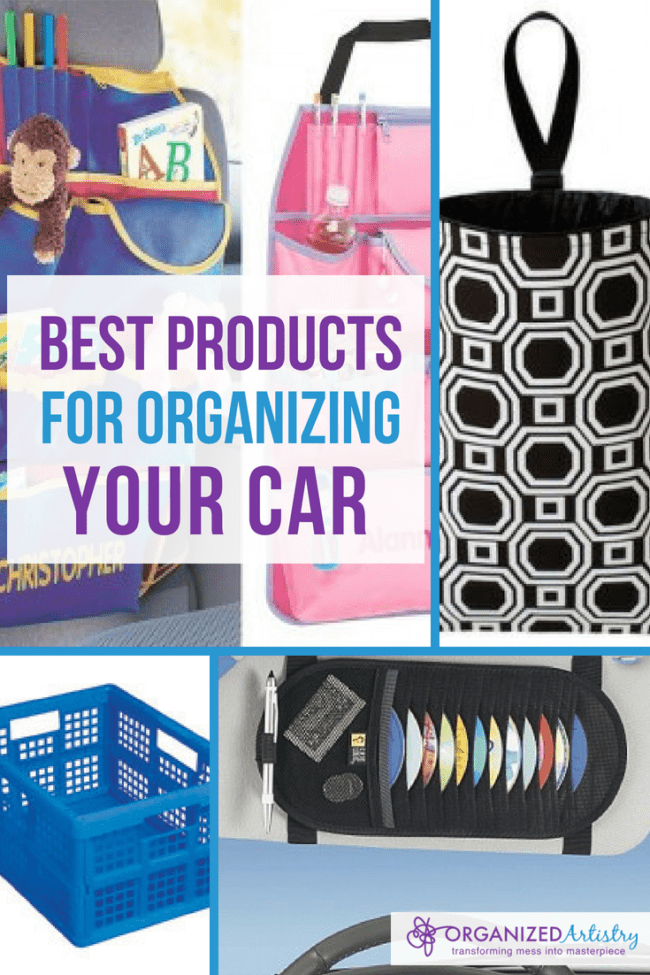
Long commute?
Live far from your family?
Got kids?
Then you probably spend a lot of time in your car.
Our cars are like a home-away-from-home. Sometimes we eat in our car. Sometimes we sleep in our car. We have TV screens and stereos and storage spaces in our cars. Yup–sounds like home to me…
So, if it’s important to keep our homes organized, it is equally important to keep our home-away-from-home organized, too.
I drive a big SUV and if I didn’t organize it, it would resemble a dumping ground on wheels. I have to organize my belongings, stuff for my kids, supplies for my business and supplies for the car just like I would organize any space in my home. When you’re ‘on-the-go’ you have to be able to find what you need quickly.
Your first step towards organizing your car is to sort and purge the items currently living in it. Once you know what is staying you’ll need a few organizing products to help you keep your home-away-from- home neat and tidy and of course–organized.
Here are a few products I use in my own car and a few that might be useful in special situations:
Trash receptacle – If you don’t want your car looking like the city dump. I highly recommend purchasing a trash receptacle for your car. This is the one I have by Case Logic and it works well for me. Unfortunately, it’s so old, the company doesn’t make it anymore:
I keep it thrown over my gear stick and hanging into the passenger side. It’s easy to stuff the garbage into the top and the velcro bottom opens easily to release the trash. I own this in tan to match my old car’s interior but when it has seen better days (the time is coming soon!), I’m getting one like this:
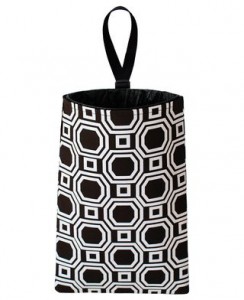 |
| Auto Trash Bag by The Mod Mobile |
There are so many fun, colorful and cool designs, I’m not sure which I would pick! Check all of them out on Allyson Hill’s The Mod Mobile Etsy site.
Visor CD Organizer – Downloading songs to my iPhone is on my long list of ‘Things I’d Like to Do Someday.’ So in the meantime, I’ve purchased a CD organizer for my visor–also from CaseLogic. My music, kiddie music–it’s all stored neatly and at arm’s reach.
Collapsible Crate – I got mine at a discount home store a bunch of years ago but you can find them at some office supply stores and The Container Store.
 |
| Photo Courtesy of Office Max |
This is what is in mine: box of manila folders for organizing jobs, plastic bags, extra umbrella, and the ‘restaurant’ bag I’ll be discussing next. Other items that can fill the crate are groceries, car accessories, and random items that might otherwise float around your trunk or back of car.
“Restaurant” Bag – I got a drawstring backpack as a promotion from a store I was making a large purchase at a few years ago. When I saw it, I knew what it would be perfect for–a ‘restaurant bag.’ I call it a ‘restaurant bag’ because it is filled with items to keep my kids occupied when we go out to eat. I keep it stocked with paper, crayons, stickers, and a package of wipes. This is kept in the crate so I’ll always know where to find it when we pull into the restaurant parking lot.
Other Organizing Products for Your Car:
The people from Tote Buddy were at the NAPO Conference 2012 EXPO with all of their beautiful designs. It would make a great gift for someone who prefers to use recycle bags when they go shopping.
Organizer for Kids: Kids come with a lot of STUFF and they like to bring some of that STUFF with them when they go in the car. To prevent all that STUFF from being all over your car, consider an organizing product that hangs over the driver/passenger seat and faces the child. Many styles have room for crayons, hand-held games, books, DVDs and other STUFF kids like to have with them in the car.
Desk: Do you or someone you know work out of their car? This product is a very good solution for those with mobile office needs. The Car Go Desk secures in the passenger seat with a seat belt and offers space for files, mobile equipment and peripherals.
OK–next time you get into your car, take a good look inside. Would any of these products make your car more organized? Do you currently use any of these products? Tell me–I’d love to know!

SaveSave
SaveSave
SaveSave
SaveSave
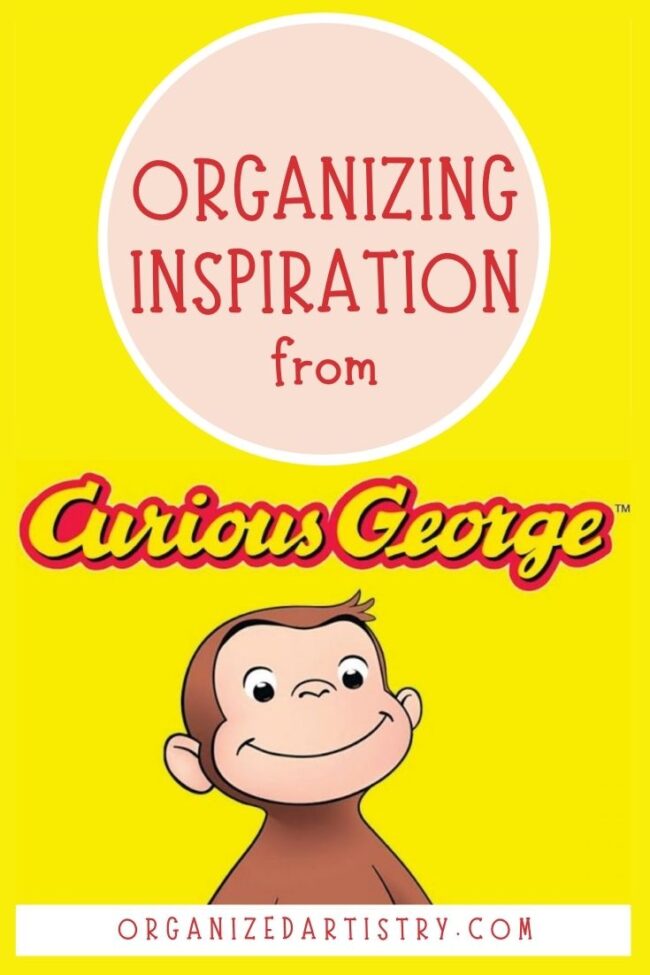
A few months ago, I was watching an episode of Curious George with my five year old. The episode was called ‘Trader George’ which made me laugh for a moment because it sounded so much like ‘Trader Joe’s’ which is a food store I love to shop in and eat from.
Hey, it was really early in the morning and I was hungry. OK–back to how this connects with organizing…
So, in the episode Curious George does some trading of items with people in order to get what he thinks he wants. The back story involves The Man With the Yellow Hat. While George is out trading his stuff to get other stuff, The Man With the Yellow Hat is at his county house going through the closet looking for items to put out at a local swap meet (where George is doing all this trading).
I’m getting to the organizing part…
Mr. Yellow, as I’ll call him for brevity sake, ends up spending much of the episode sitting in front of his closet pulling stuff out and reminiscing about it. My son is enjoying the show while I’m yelling at the TV in my head, “Don’t do that!’
You see, Mr. Yellow was breaking one of the cardinal rules of organizing.
Do not reminisce while organizing.
Why is this a bad idea?
It’s distracting. You’re supposed to be sorting and purging and getting rid of the old to make for the new and instead you’re looking at pictures or dreaming about the last time you fit into that cocktail dress and now you’ve stopped organizing to look for the matching shoes and handbag you wore with it ten years ago.
It’s a time waster. Not many people have all day to organize. Time is precious and it’s important to focus on organizing during the time you’ve alloted for it before you get tired or have to move on to the next activity of the day.
There’s nothing wrong with taking a few moments to think about the past. But those moments should not take you away from the task at hand. Pick a time later in the day or week to go through all the bridesmaids dresses you uncovered or all the never-before-seen pictures you found from your parent’s first Thanksgiving together.
Next time you’re organizing a spot in your home and you come across some cool stuff you want to dwell upon for more than thirty seconds, think about The Man With the Yellow Hat. Make time later to reminisce–or you may miss out on a lot more than just a swap meet…
Want to stay current and connected to Organized Artistry? Follow us on Facebook, Pinterest, YouTube, LinkedIn, Instagram, and Goodreads!

If you have a kid who likes playing with LEGO but can’t seem to keep it off the floor and other horizontal surfaces–help is here!
Chloe at
Get, Set Organize has written a most amazing blog post on storage options for LEGO. Carve a good 15 minutes out of your day to digest it all. There’s A LOT of information jam-packed into that post.
Not only does she offer 26 storage ideas both store bought and DIY, she also gives tips on how to organize a LEGO collection.
Kids learn through play. So, why not teach them to be organized through play? They’ll be home for Christmas/Holiday break soon. A LEGO organizing project is a great way to keep your floors free of LEGO and teach your kids sorting skills, responsibility, and an appreciation for living an organized life.
Every Friday on my Facebook Fan Page I offer my fans an organizing tip based on a monthly theme. September’s theme is Decluttering.
Decluttering is about sorting and purging your belongings, creating a logical home for them and letting go of the items that you no longer want. Sometimes those items will go in the trash. Sometimes they’ll end up in the loving arms of a friend or family member.
Sometimes, they’ll end up in the loving arms of a stranger. A stranger who has been looking for that item you are giving away. A stranger who cannot otherwise afford to buy that item new.
As the saying goes, “One person’s trash is another person’s treasure.”
Before you begin the decluttering process in your home, think about where you would like to take your donations to. This prevents the donated items from lingering in your home too long. Either…
Bag ’em up. Put them in your trunk. Drive to a donation center.
or
Bag ’em up. Call for a pickup. Place bags in front of your door.
Below is a short list of organizations that accept donations. Some have freestanding stores and some will pick up at your home. All will give you a tax deduction form for your records.
Vietnam Veterans
Goodwill
Lupus
The Salvation Army
These are the biggies, but don’t forget your local thrift shops and donation centers, too!
Where do you usually donate your unwanted items?
Whenever I give a presentation on the topic of clutter, I like to talk about CHAOS–a word that describes a home (or any space) filled with clutter. I write it on my easel pad like this:
C
H
A
O
S
and I ask people if they know what it stands for. I always get a good laugh out of my audience when I let them know it stands for…
Can’t
Have
Anyone
Over
Syndrome
Do you ever feel like you suffer from CHAOS?
The Memorial Day weekend is finally upon us–Yipeee!
Are you ready?
Do you still have heavy sweaters in your drawers? Is your snow shoveling gear easier to get to than your kids’ floaties? Are your boots blocking your collection of flip-flops?
If you answered ‘Yes.’ then it’s time to do what I call ‘The Winter/Summer Switch.’
Doing the ‘Winter/Summer Switch’ started when I was a kid. With three kids, a small apartment, and very little closet/drawer space we had no choice but to store out-of-season clothing in a place other than our closets. My parents were very creative. They had luggage that they rarely used so our off-season clothing would be stored there. At the end of the Winter and then again at the end of the Summer, my father would take the suitcases down from the top of the closet. We’d try on the clothes and make piles of what to keep for the upcoming season, what to store as hand-me-downs and what to pass on to younger cousins.
That’s just one example. Here are some ideas for jumpstarting your own personal ‘Winter/Summer Switch:’
1. Identify the areas of your home that are in need of ‘The Switch.’ These might be the garage, clothing closets, outdoor storage area, linen closets, etc.
2. Make an appointment with yourself to choose ONE area to focus on at a time. Please don’t spend the entire holiday weekend switching your stuff around. Even most Professional Organizers wouldn’t do that…
3. Gather supplies such as garbage bags, labels, markers (or a label maker), and a pen and paper for jotting down any thing you discover you need or want for the upcoming season.
4. Sort through your items, purge what you don’t need and determine the best way to store what you are keeping.
5. Repeat Steps 2-4 as necessary until you are ready for the Summer. You’re one step closer to being ready for the new season…



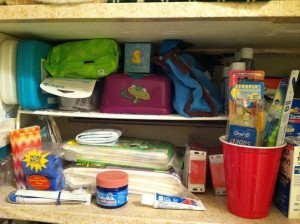
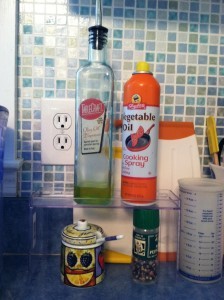

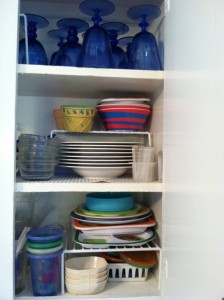
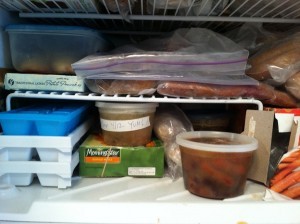
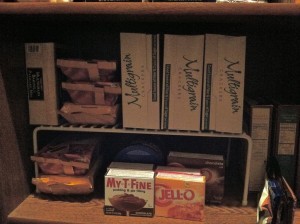
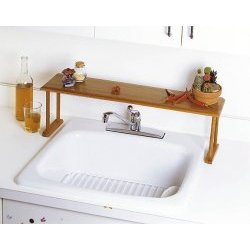
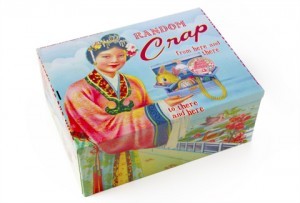
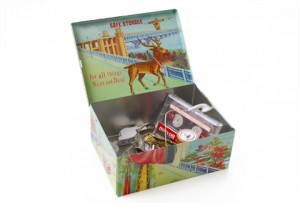
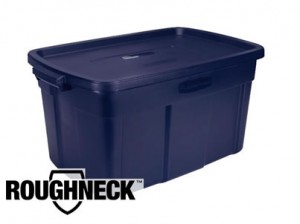
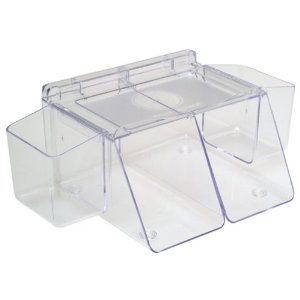


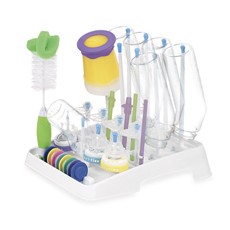

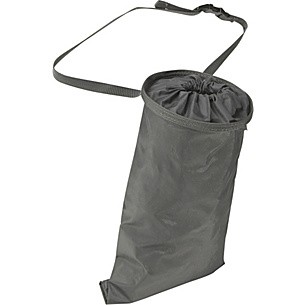

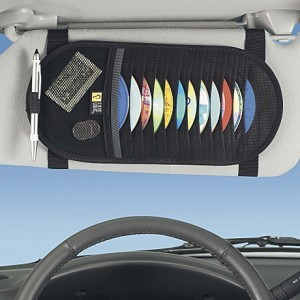

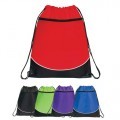
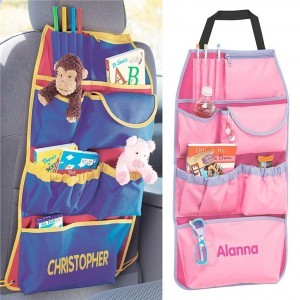
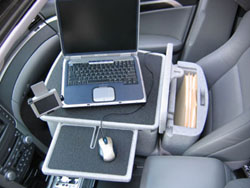

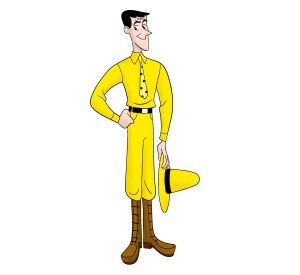
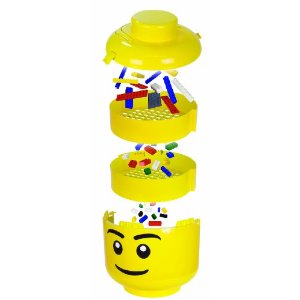
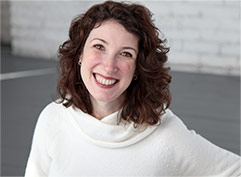
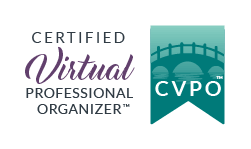
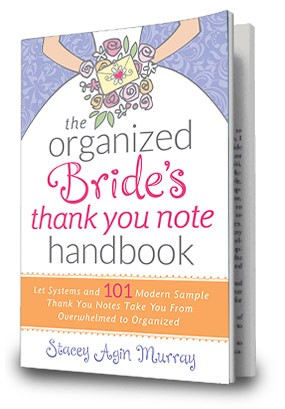


 Contact Stacey to Get Started!
Contact Stacey to Get Started!